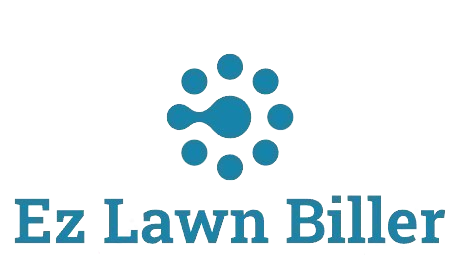Maximize your lawn care profits with our ultimate guide to setting effective pricing for lawn services. Learn strategies that work!
The Ultimate Guide to Set Pricing for Lawn Services
Understanding how to price your lawn care services is crucial for establishing a successful business. In this comprehensive guide, we will explore various strategies for setting prices that reflect the quality of your work while ensuring profitability. We will discuss factors that influence pricing, industry standards, and practical tips to help you develop a pricing model that works for your lawn care business. By the end of this article, you will have the knowledge and tools to confidently set your prices and attract more clients.
In the competitive field of lawn care, pricing your services correctly can make or break your business. Whether you are just starting or looking to adjust your existing prices, understanding the key components of effective pricing strategies is essential. This guide will delve into cost analysis, market research, and pricing psychology, helping you make informed decisions that contribute to your bottom line. Additionally, we will provide insights into using technology, specifically lawn billing software, to streamline your billing process and improve customer satisfaction.
Understanding Your Costs
The first step in pricing your lawn services is to understand your costs. This includes direct costs such as materials, labor, and equipment, as well as indirect costs like insurance, marketing, and administrative expenses. To create an effective pricing model, you need to calculate your total costs accurately.
Establish a detailed budget that outlines all your expenses. For instance, if you charge $50 for mowing a lawn, ensure that you factor in fuel costs, maintenance of your equipment, and wages for any employees you may have. Analyzing these costs will give you a clearer picture of your minimum pricing threshold, ensuring you cover your expenses while making a profit.
Moreover, consider using lawn service software, which can help track and manage your expenses efficiently. This kind of software can provide insights into where you might be overspending and help you refine your pricing strategy accordingly.
Market Research and Competitive Analysis
Conducting market research is critical when setting your prices. Analyze what your competitors charge for similar services in your area. This doesn’t mean you need to match their prices, but understanding the market rate gives you a benchmark to work from.
Look for local companies that offer lawn care services and take note of their pricing strategies. Are they charging premium prices for exceptional service, or are they competing on affordability? This research will help you position your services in the market effectively. Being aware of your competition will also help you identify gaps in the market where you could offer unique services or value.
For example, if most companies offer basic mowing services, consider adding value by providing additional services like fertilization or pest control at a competitive price. This could differentiate you from the competition and justify a higher price point.
Pricing Psychology: How to Influence Customer Perception
Pricing psychology plays a significant role in how customers perceive your services. For instance, pricing your services at $99 instead of $100 can create an impression of being more affordable. Understanding how consumers respond to pricing can help you craft prices that not only reflect your costs but also appeal to customers psychologically.
Consider offering tiered pricing options. For example, you could create packages that offer essential, premium, and luxury lawn care services. This allows customers to choose based on their budget while providing options that can lead to upselling opportunities. Additionally, displaying the most popular package can guide customers towards choices that ensure maximum profitability for your business.
Using a lawn company app can help in offering these tiered prices effectively, allowing clients to see their options clearly and make informed decisions. By enhancing the user experience, you increase the likelihood of conversion, ultimately boosting your profits.
Best Practices for Pricing Structure
Establishing a clear pricing structure is essential for transparency and customer trust. Consider presenting your prices in a straightforward manner on your website or marketing materials. Customers appreciate knowing what to expect and having clarity on costs can reduce the likelihood of disputes.
Develop a pricing table that lists various services and their associated costs. This can be an effective way to communicate your offerings. Make sure to highlight any discounts or promotions you may have, as these can incentivize customers to choose your services over competitors.
Furthermore, consider implementing a recurring billing system for clients who require regular services. Utilizing lawn billing software can automate this process, ensuring timely payments and reducing the administrative burden on your team. Regular clients can benefit from a discount for committing to a service plan, thereby increasing both customer loyalty and your revenue.
Adjusting Prices According to Seasonal Demand
Seasonal changes can greatly influence the demand for lawn care services. For instance, certain services may be more popular during spring and summer, while others might see increased demand in fall. Understanding these trends allows you to adjust your pricing accordingly.
Consider implementing seasonal pricing strategies where you can offer discounts during slower months to attract clients. Conversely, during peak seasons, you might raise prices slightly due to increased demand for your services.
For example, if you anticipate a surge in demand for fertilization services in spring, you might raise your rates during that period while offering competitive rates for maintenance services during the fall. This dynamic pricing approach not only maximizes profits but also keeps your services relevant throughout the year.
Leveraging Technology for Efficient Pricing
In today’s digital age, leveraging technology is key to optimizing your pricing strategy. Utilizing lawn service software allows you to efficiently track expenses, analyze pricing models, and manage customer relationships. With the right tools, you can gain valuable insights into customer preferences, enabling you to adjust your offerings and pricing accordingly.
For example, customer data can reveal which services are most popular and which packages lead to the highest conversion rates. This allows you to refine your pricing strategy and tailor your services to meet the needs of your customer base. Additionally, a lawn company computer program can automate many of these processes, saving you time and reducing the chances of error.
Consider integrating tools that offer analytics capabilities, helping you understand market trends and customer behavior. Such information can be invaluable in making data-driven decisions regarding your pricing structure and service offerings.
Setting Prices for Different Lawn Care Services
Different services require different pricing strategies. For instance, basic mowing services might have a flat fee, while more complex services like aeration or landscaping might require a more detailed pricing structure based on the size and condition of the lawn.
Establish a pricing matrix that takes into account various factors for each service, such as square footage, type of service, and additional requirements. This can ensure that your pricing reflects the complexity and effort involved in providing each service, thereby ensuring profitability.
For example, if you offer a basic mowing service for $40 on a standard residential lawn, but a more elaborate landscaping service might be priced based on the number of hours of labor and the materials used. This variance allows you to cater to a wider range of customers with different budgets and needs.
Communicating Value to Clients
Once you have established your pricing, it is crucial to communicate the value of your services effectively. Educate your clients on what your services entail and the benefits they will receive. Highlight aspects like quality, reliability, and customer service as factors that justify your pricing.
Develop marketing materials that explain the advantages of hiring your lawn care service over competitors. Use visuals of your work, customer testimonials, and before-and-after photos to illustrate the value you provide. Engaging content on your website or social media can also help reinforce the quality of your services.
Additionally, consider offering free estimates or consultations. This allows potential clients to understand your pricing structure better and see the value in choosing your services. A lawn service app could facilitate this process by allowing clients to schedule estimates easily, further enhancing the customer experience.
Conclusion
Setting prices for lawn services involves a thorough understanding of your costs, market dynamics, and consumer psychology. By analyzing these elements, you can craft a pricing strategy that not only covers your expenses but also maximizes your profits.
In today’s competitive lawn care industry, leveraging technology, such as lawn billing software, can streamline your operations and improve customer satisfaction. Regularly review your pricing structure and remain flexible to adjust based on seasonal demands and market conditions.
Ultimately, the goal is to establish a pricing model that reflects the quality of your services while ensuring profitability and customer loyalty. Take the time to implement these strategies, and you’ll be well on your way to building a successful lawn care business.




